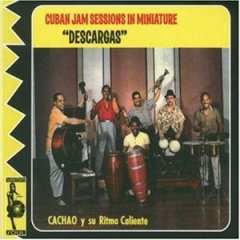
Although Cuban bass virtuoso Israel “Cachao†Lopez took his final breaths this week, it’s hard to imagine this humble giant, who played in more than 250 groups from the 1920s on, as not having a pulse. Cachao would have been legendary even if he had retired around 1940. As a member of Arcaño y Sus Maravillas in the late 1930s, Cachao and his multi-instrumentalist brother Orestes “Macho†Lopez reworked the rarefied French-influenced parlor music of the danzón into the mambo. But by the 1950s, when Perez Prado and many others (from Rosemary Clooney to Bill Haley) rode the mambo to international fame, Cachao had moved on to perfect the descarga, the “jam session†format that provided breathing room for serious instrumental improvisation. More than a rhythm master, Cachao united melody and harmony into an irresistible connecting thread—what George Clinton would later call a “groove.â€
Because Cachao was a Cuban expatriate who spent his postwar years in places ranging from Madrid to Miami, it would be easy to give his career the Buena Vista Social Club treatment, viewing him as a nostalgic relic of Cuba’s romantic past. But that would understate his legacy. One of Cachao’s few peers, pianist Bebo Valdes, has noted that before Cachao, Cuban music had counter-tempo, but still lacked real syncopation. Cachao, who spent decades in the Havana Symphony performing with conductors ranging from Ernesto Lecuona to Igor Stravinsky, elevated the seriousness of the bass even as he made it dance, swing and shimmer.
Some of Cachao’s obituaries quote from a hero of mine—musicologist and “cowboy rumba†innovator Ned Sublette–whose astonishingly good book Cuba and its Music describes Cachao as “arguably the most important bassist in twentieth century popular music.†While this may beg the question of whether Charles Mingus was “popular,†Sublette has a point. As he notes, “with Cachao, the modern bass feel of Cuban music begins. And with that begins the bass feel of the second half of the twentieth century in U.S. music as well—those funky ostinatos that we know from later decades of R&B, which have become such a part of the environment that we don’t even think about where they came from.â€
 Cachao’s 1942 song “Rareza de Melitón†thrillingly traced in Sublette’s book, hints at his far-ranging influence. In 1957, Arcaño reworked the same rhythm and renamed it “Chanchullo.†Five years later, Tito Puente used the same groove in his “Oye como va.†Santana’s 1970 cover of “Oye como va†drew on Cachao’s tumbao to provide the signature riff of his career and a cornerstone for rock and salsa. Cachao bears no apparent responsibility for the mediocre duets that Santana later recorded with American pop stars. But another Sublette essay, “The Kingsmen and the Cha-cha-cha,†makes a persuasive case that Cuban music has had a more enduring influence in rock and funk than you’d expect, showing up in everything from the mambo back beats in rock and roll to the timbale riffs in Funkadelic’s “One Nation under a Groove.†In effect, Cachao’s innovations provided a groove for two nations.
Cachao’s 1942 song “Rareza de Melitón†thrillingly traced in Sublette’s book, hints at his far-ranging influence. In 1957, Arcaño reworked the same rhythm and renamed it “Chanchullo.†Five years later, Tito Puente used the same groove in his “Oye como va.†Santana’s 1970 cover of “Oye como va†drew on Cachao’s tumbao to provide the signature riff of his career and a cornerstone for rock and salsa. Cachao bears no apparent responsibility for the mediocre duets that Santana later recorded with American pop stars. But another Sublette essay, “The Kingsmen and the Cha-cha-cha,†makes a persuasive case that Cuban music has had a more enduring influence in rock and funk than you’d expect, showing up in everything from the mambo back beats in rock and roll to the timbale riffs in Funkadelic’s “One Nation under a Groove.†In effect, Cachao’s innovations provided a groove for two nations.
Cachao’s late-breaking recognition in the United States came about largely through the efforts of Bay Area percussionist John Santos, who brought him stateside for two well-received concerts, and actor Andy Garcia, who went on to produce albums for Cachao, as well as the 1994 concert documentary Cachao…Como Su Ritmo No Hay Dos (Like His Rhythm There is No Other). A forthcoming documentary, Cachao: Una Mas, is scheduled for its premiere at the San Francisco International Film Festival this April. For those new to Cachao’s recorded output, the mid-nineties classic Master Sessions Vol. 1, captures a career-spanning range of styles. Two reissues worth seeking out are Arcaño y Sus Maravillas’ Danzon Mambo 1947-1951, and Cachao’s 1957 masterpiece Descargas En Miniature. Bass Player magazine described the latter as “the Cuban music bible for anyone playing or studying this music.†Another very good anthology, last year’s Cachao Descargas: The Havana Sessions, offers a comprehensive retrospective of the master’s descargas recorded between 1957 and 1961. If these don’t give you a pulse, seek medical help immediately.
Cachao and Paquito D’Rivera, “Al Fin Te Viâ€
Cachao and Bebo Valdes, “Lagrimas Negrasâ€